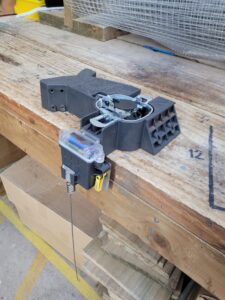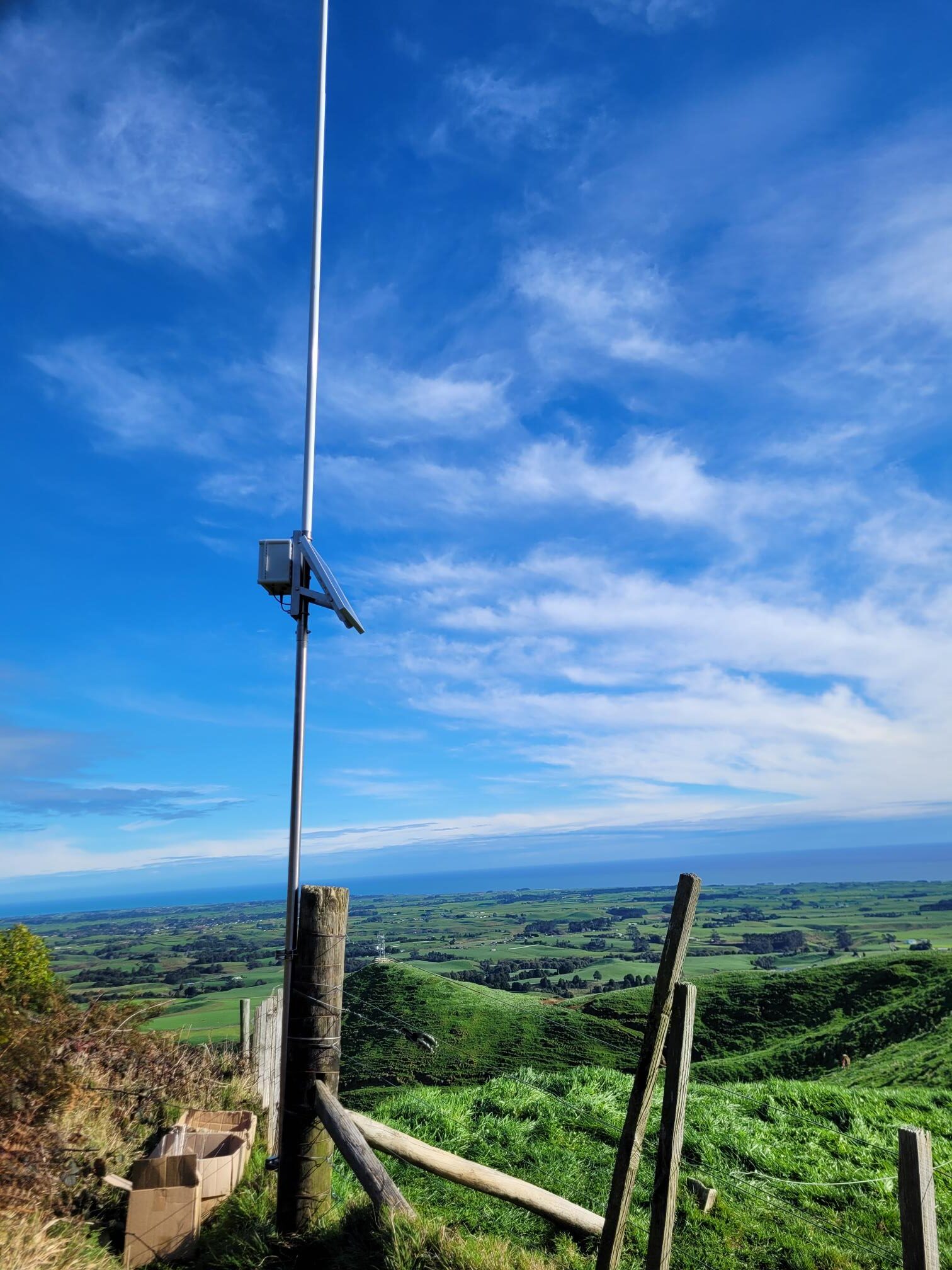Wireless Trapping Trial
 New technology being trialled within Te Papa Kura o Taranaki is helping make trapping predators easier and more targeted in tricky terrain.
New technology being trialled within Te Papa Kura o Taranaki is helping make trapping predators easier and more targeted in tricky terrain.
The technology, by Auckland company Encounter Solutions, is being used on the western side of Kaitake, which is steep terrain with radio interference and no cellphone coverage. The trial works with a network of traps fitted with electronic ‘nodes’, which connects to the cellular network via an 8-metre-tall aerial powered by a solar panel.
Taranaki Mounga Project/DOC biodiversity ranger Katherine Turton says when a trap is triggered it sends an immediate alert to a cellphone, rather than taking several hours via a satellite system. The triggered trap will then be checked by staff or volunteers.
“It has been really easy to set up and easy to use. It’s not restricted to a linear trap line, so if we are targeting hot spot ferret areas (tracked by dogs) we can put a cage anywhere near a den.”
An aerial has been set up on the park boundary, which is providing connection to 50 traps, though it has the capacity to connect to hundreds of traps within a few kilometres.
Taranaki Mounga Project co-director Sean Zieltjes says the technology could be another useful tool to increase gains for the biodiversity of the region.
Possums in the area have been almost eliminated using technology from Zero Invasive Predators (ZIP).
“We’ve been utilising new tech solutions since 2019 with the support of ZIP. We’re open to new trapping methods and technologies as we’ve found some things work better in certain terrain and with certain predators.
“This trial looks to tackle the issue of wireless comms in a challenging area, which we need to be on top of with increasing numbers of kiwi,” he said.
More than 6,000 traps are in use on Taranaki Maunga and Kaitake within Te Papa Kura o Taranaki, and, with over 75,000 trap checks carried out in the past year by staff and volunteers, any efficiencies gained to benefit native wildlife are welcomed.

